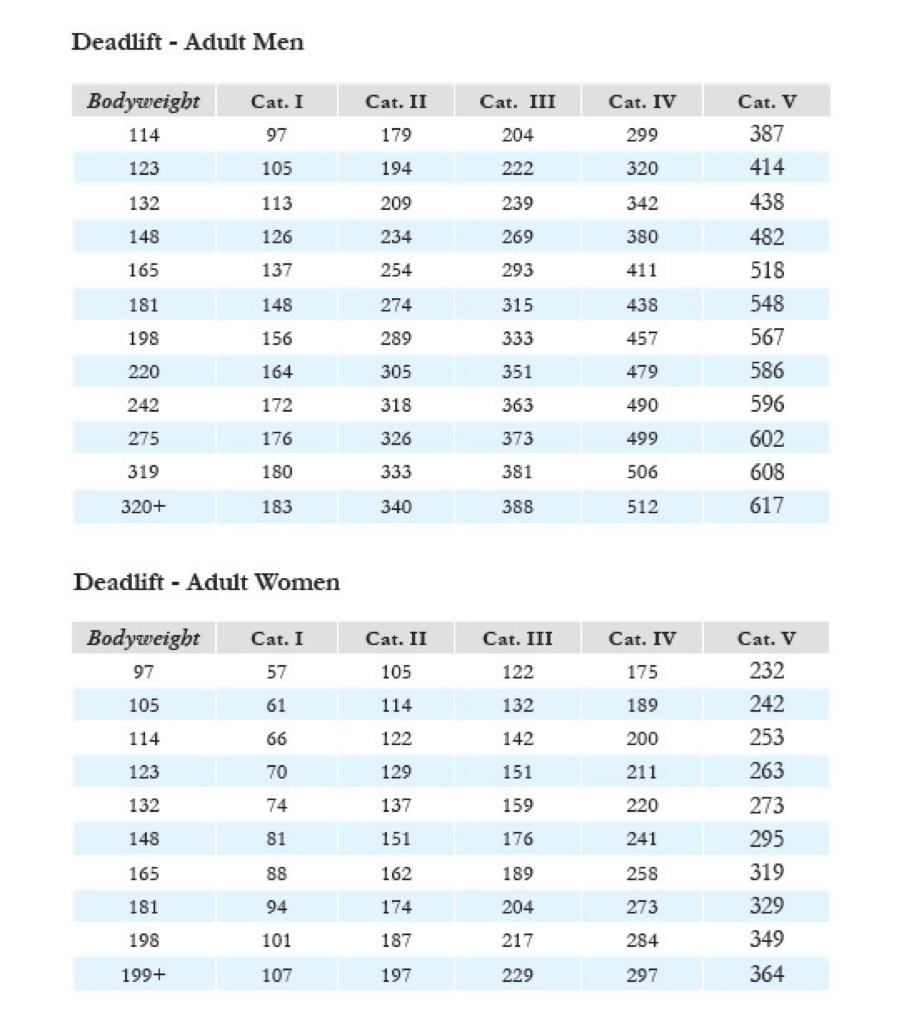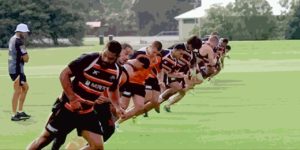There are lots of discussions about what are the best exercises for ruggers. Every strength coach has their preferences, and many of these coaches have diametrically opposed views. A few years ago, I went to see a famous American (football) strength coach on a lecture tour, and he only ever prescribed machine exercises for his players.
In his opinion, machine exercises were best because they were “safer” than most freeweight exercises, and workout results were much easier to quantify. He also promoted high-intensity training, which involves doing a single set of each exercise to failure.
Interestingly, his team’s results were, at the time, very impressive, and his weights room injury rates were almost zero. I wish I could remember the name of the football team this guy worked for, but I know they were famous – even to a British non-football fan like me!
Of course, coaches like are in the minority, and most rugby strength coaches have embraced more traditional and varied training methods. And many of those coaches prescribe the deadlift as part of their workouts.
But, does a strong deadlift matter in rugby and will increasing your deadlift improve your performance on the rugby field?
The short answer is – probably!
Why such a non-committal response? Because such a relationship is impossible to quantify. If training for a bigger deadlift means missing team training, your rugby performance will decline even if you add plates to the bar.
Similarly, if deadlifting hurts your back, so you give it up, your rugby performance may increase simply because you spend less time injured.
You could also put on a powerlifting deadlift suit and belt, and your deadlift will increase. That won’t have any effect on your rugby performance either.
But all things being equal, a stronger deadlift SHOULD help in rugby. Here’s why!
A stronger posterior chain
The posterior chain is the collective term for the muscles on the back of your body, including your hamstrings, glutes, and lower back. These are the muscles that drive you forward. Whether you are in the scrum, sprinting for the line to score a try, or putting in a big tackle, the posterior chain is your “engine room.”
Deadlifts are a powerful posterior chain exercise. Your quadriceps are involved in deadlifts, but your posterior chain does the majority of the work.
A stronger deadlift should translate to increased hip extension strength, meaning you can push harder, drive harder, and tackle harder too.
Of course, there are other posterior chain exercises you can use, including kettlebell swings, glute-ham raises, hip thrusts, power cleans, and Romanian deadlifts. But, for a lot of ruggers, the standard off-the-deck barbell deadlift is a more accessible lift.
Increased inter-joint and intermuscular coordination
The deadlift is a compound exercise. That means it involves multiple joints and muscle groups. In fact, in an analysis of the deadlift, it’s hard to find many muscles and joints that AREN’T engaged in this exercise.
It’s safe to call the deadlift a full-body exercise.
As such, deadlifting teaches you to use your body as a single, synergistic unit, increasing inter-joint and intermuscular coordination in the process. Rugby is a full-body activity, and so, in theory, at least, a bigger deadlift should lead to better sports performance.
With the deadlift, you grip the bar with your hands, drive your feet into the floor, and then use everything in between to lift the weight. Exercises don’t get much more functional than that!
Better lifting mechanics
Some strength coaches believe that the power clean is better for ruggers than deadlifts. This makes a lot of sense because power cleans are performed at speed – like many of the aspects of rugby. After all, you don’t tackle slowly, or try to push the opposition back slowly. You hit ‘em hard and fast.
For this purpose, the power clean is potentially the better exercise.
But, if you look at a power clean, it starts with a fast deadlift. If you can’t do a deadlift with good form, you probably won’t be able to power clean well either. And, because it’s a high-velocity movement, a poorly performed power clean is very likely to cause injury.
Deadlifts, when done correctly, teach you to lift properly. Your lower back should be slightly but tightly arched, your abs braced, and you use core to transmit the forces generated by your legs into the implement you are lifting.
Skills learned by mastering the deadlift should have a knock-on effect to other aspects of your training, as well as playing rugby. Pushing in a maul with a rounded back is an excellent way to get hurt, especially if another player charges in behind you. The same is true for scrummaging and tackling. A good deadlift teaches you to maintain a neutral spine, increasing your potential for force generation while reducing your risk of injury.
Power cleans maybe a little more rugby specific, but if you can’t deadlift properly, you probably won’t be able to power clean properly either. Plus, the more you can deadlift, the more you should be able to power clean. The reverse may not be as true.
It’s not a case of choosing either/or; both of these lifts can be beneficial. It’s just that deadlifts should come first as they are the foundation of a properly performed power clean.
The dark side of deadlifting for ruggers
It’s fairly clear (to me, at least!) that a strong deadlift should help improve your rugby performance. But there are a few situations where that might not be entirely true. The potential downsides of this exercise include:
Not great for tall lifters
Using standard Olympic bumper plates, the bar should be about nine inches off the floor. If you are very tall or have shorter than average arms, you may have a hard time getting down that low to deadlift with good form. That’s why a lot of tall powerlifters use a sumo stance; it allows them to get closer to the bar more easily.
The good news is that there is an easy remedy for this problem – raise the bar and do deadlifts from blocks. There is no reason that you have to deadlift from the floor. Raise the bar to mid-shin height to make the movement easier to master.
Hard to do if you have poor mobility
Ruggers have a reputation for being stiff and immobile. That’s not true for all rugby players but can certainly be said about quite a few! Let’s be honest, you’re built for speed and strength, not gymnastic contortions…
Because of this, some ruggers may struggle to get into a good lifting position, simply because their hamstrings are too tight. If your back tends to be rounded at the bottom of a deadlift, before you even lift the bar from the ground, your mobility needs work.
The solution for this problem is the same as for our lanky beanpole rugger – raise the bar on blocks. But, this solution only addresses the symptom of the problem and not the cause, so make sure you work on your mobility too.
Biceps injuries
A big deadlift often involves using a mixed grip. A mixed grip, where one hand is supinated and the other pronated, stops the bar rolling out of your fingers. However, it also increases stress on the elbow joint on the supinated side, especially at the insertion of the biceps.
Torn biceps injuries can be debilitating and aren’t worth risking in pursuit of a bigger deadlift.
You can avoid this problem by using a double overhand grip for deadlifts. Use straps to reinforce your grip instead of a mixed grip. Yes, this does mean your deadlift isn’t powerlifting legal, but that’s irrelevant. You’re a rugger training to increase your sports performance, and not a powerlifter training for competition.
Risk of back injury
No other barbell exercise allows you to lift as much weight as the deadlift, although squats come close. This means that you can put a lot of stress on your body, especially your lower back. This stress increases dramatically if your lower back becomes rounded.
A rounded lower back is a weak lower back because stress that should be on your muscles ends up on your lumbar intervertebral discs and ligaments. Once damaged, these structures can take a very long time to heal if they heal at all.
While a bigger deadlift could improve your rugby performance, it could also increase your risk of injury. Subsequently, any weight increases should not be rushed or forced, and you should never sacrifice good form for more reps or more plates on the bar. For ruggers, deadlifts are a means to an end and not the end itself.
So, what constitutes a strong deadlift?
Again, this is an impossible question to answer. There is no set deadlifting standard for ruggers because so many factors are in play. Height, age, weight, position, genetics, gender, arm, torso, and leg length – these all play a part.
We can’t just say that all ruggers should be able to pull a double bodyweight deadlift. It’s just not that simple.
Instead, here is a deadlift performance chart from Starting Strength – a training plan that isn’t for powerlifters, but is still built around squats, bench presses, and deadlifts.
Category III is a good target for most rugby players to target as a max Deadlift.

While you don’t have to hit these numbers, most ruggers should be able to get reasonably close after a couple of years of consistent training.


